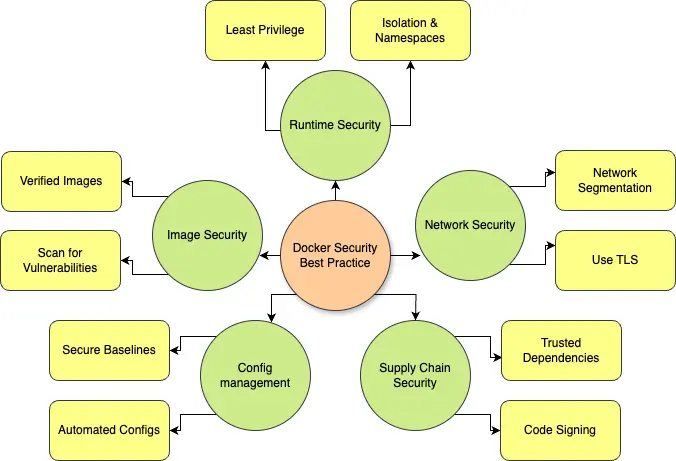Docker has revolutionized how purposes are developed and delivered by enhancing the effectivity and scaling of containerization. Nevertheless, the speedy proliferation and extensive adoption of Docker expertise has elevated various severe safety vulnerabilities. The objects beneath enumerate some key approaches in the direction of optimum safety in Docker containers.
Key safety areas in Docker
Picture safety:
Base photographs are the muse of Docker containers, and making certain their integrity is paramount. When organizations use untrusted or outdated photographs, they threat introducing potential vulnerabilities into their containers, which can result in extreme safety exposures.
To successfully mitigate this threat, organizations ought to use solely verified photographs from trusted sources and make it routine to scan these photographs for any vulnerabilities that will exist usually. The perfect practices on this regard embody implementing multi-stage builds, which assist reduce the assault surfaces that may be exploited, in addition to making certain that the photographs are stored updated with the most recent safety patches out there.
Runtime safety:
Poorly configured containers can turn out to be uncovered to totally different runtime threats and vulnerabilities. It’s important to run containers with the minimal privileges they should carry out their roles, and this may be considerably facilitated by operating them in namespaces mixed with management teams for isolation, which is able to assist to stop privilege escalation and potential container escapes.
In addition to, real-time monitoring of what occurs inside a container is extremely required for on-time detection and correct response to safety incidents earlier than they’ll become extra extreme points.
Community safety:
With out correct community segmentation, lateral motion can rapidly happen with attackers inside containerized environments, creating a big safety threat. The shortage of acceptable community segmentation means enough community segmentation practices and strict insurance policies should be applied and adhered to, whereas encryption with TLS is required to maneuver information securely.
It’s additionally critically essential to actively monitor and log all flows to detect unauthorized entry makes an attempt and stop doable breaches earlier than they trigger severe hurt.
Configuration administration:
Misconfigurations are among the many most important contributing components to vulnerabilities inside container environments. If this concern is to be addressed sufficiently, organizations should change their methods and solely rely partially on configurations offered by Docker within the default occasion.
As an alternative, safe custom-configured baselines for container deployments must be developed and created. As well as, adopting automated configuration administration mixed with Infrastructure as Code (IaC) practices ensures consistency and safety when implementing a number of operational environments.
Provide chain safety:
Containers often depend on third-party libraries, which can introduce vulnerabilities when the versioning shouldn’t be vetted. To safe the container provide chain, a strong technique for dependency administration, implementation of code signing for verification, and well timed part updates to keep away from dangers attributable to outdated dependencies are important.

Conclusion
Whereas Docker scales up and deploys nearly any software, you possibly can’t neglect its safety. By following these practices — securing base photographs so they’re freed from vulnerabilities, making use of the precept of least privilege to reduce entry rights, enhancing community defenses to guard information in transit, automating configuration administration to scale back human error and, most significantly, defending the provision chain to not introduce threat — organizations can successfully construct a resilient and safe containerized infrastructure that meets their wants.
With these measures, Docker environments can keep agile, scalable, and well-protected from numerous quickly evolving trendy threats.
We’d love to listen to what you assume. Ask a Query, Remark Under, and Keep Related with Cisco Safe on social!
Cisco Safety Social Channels
Share:

